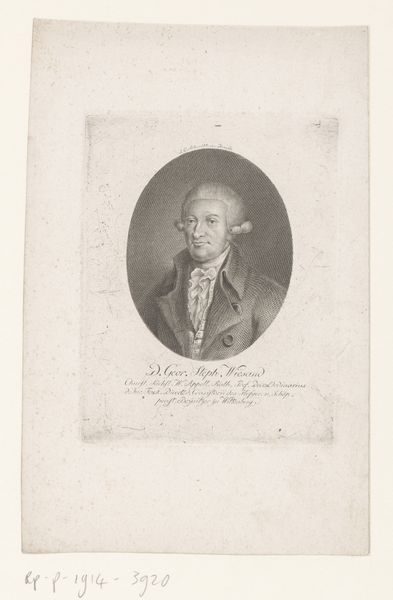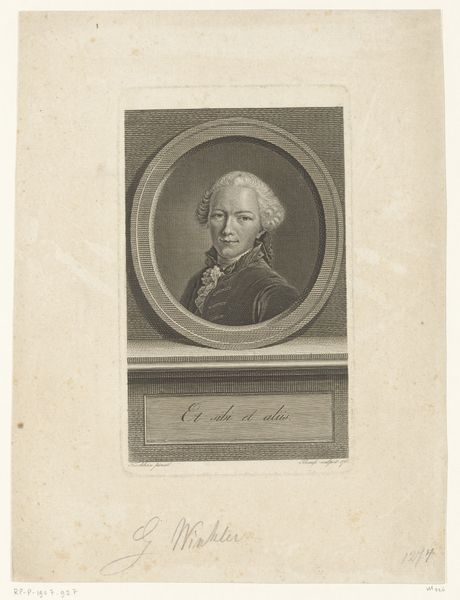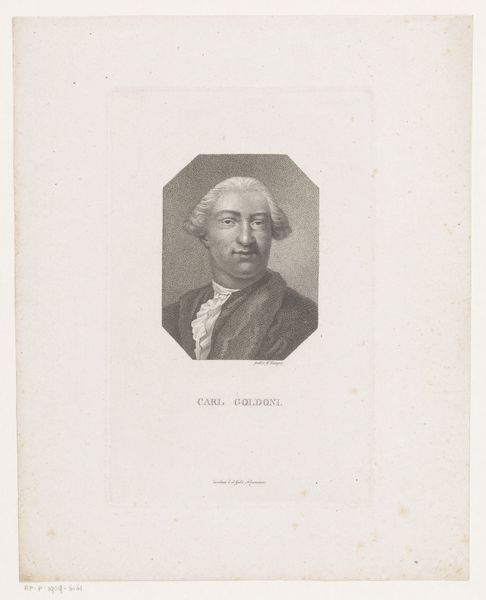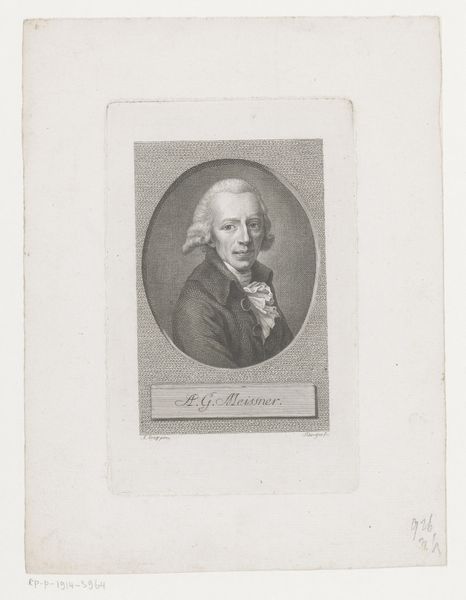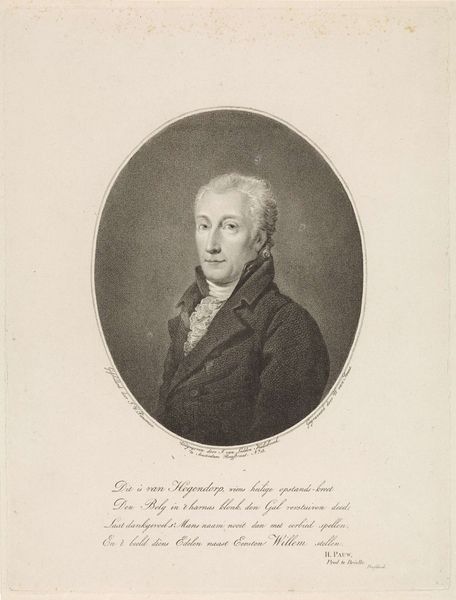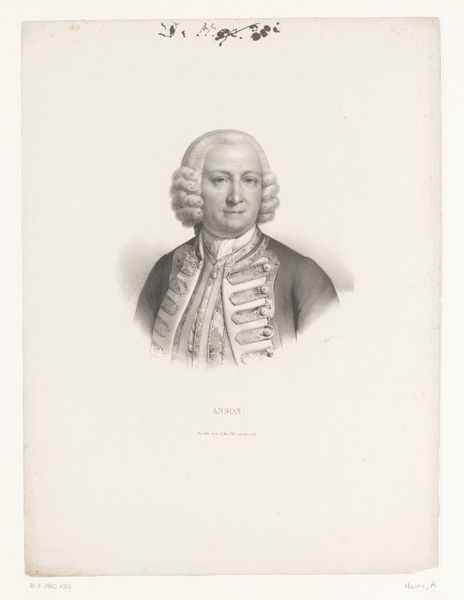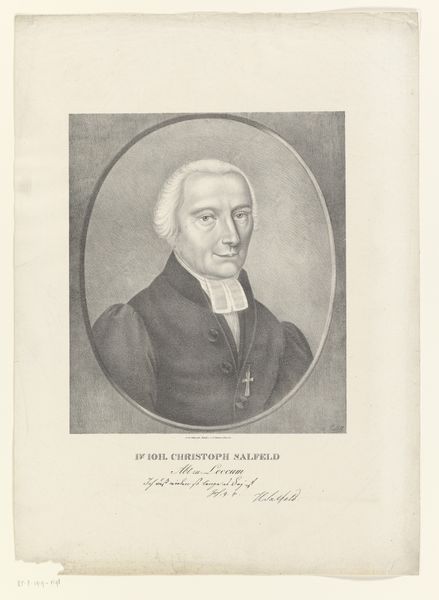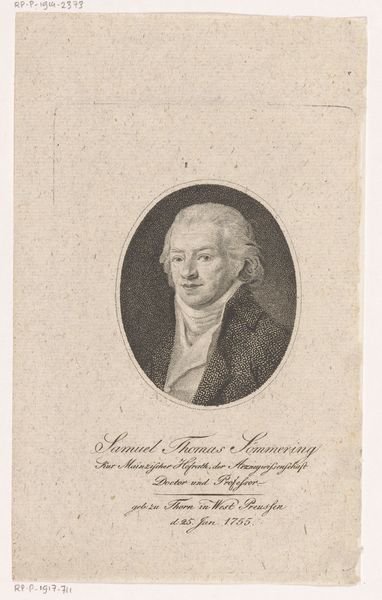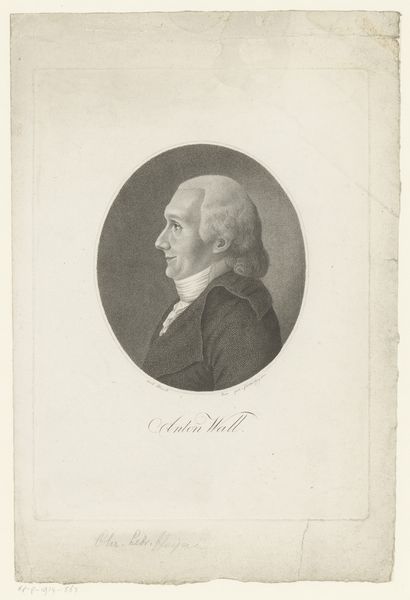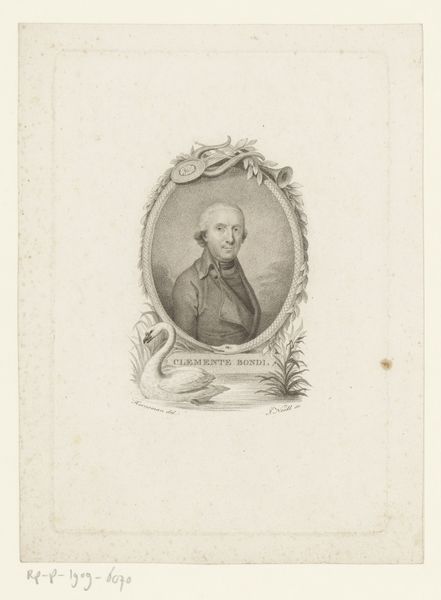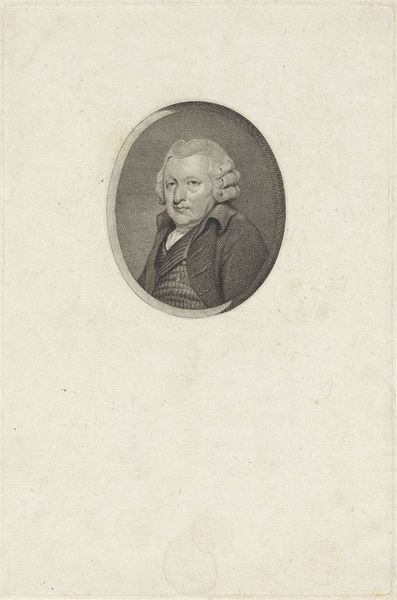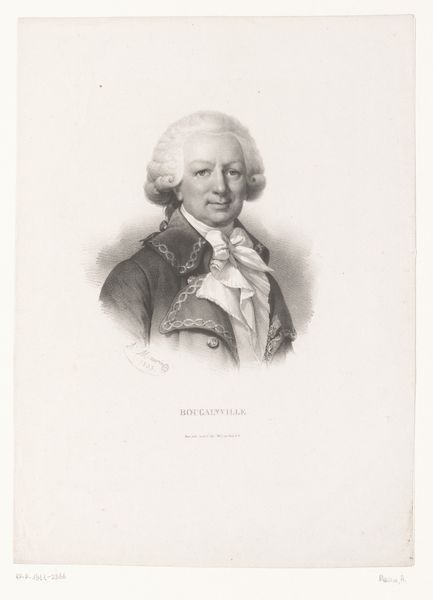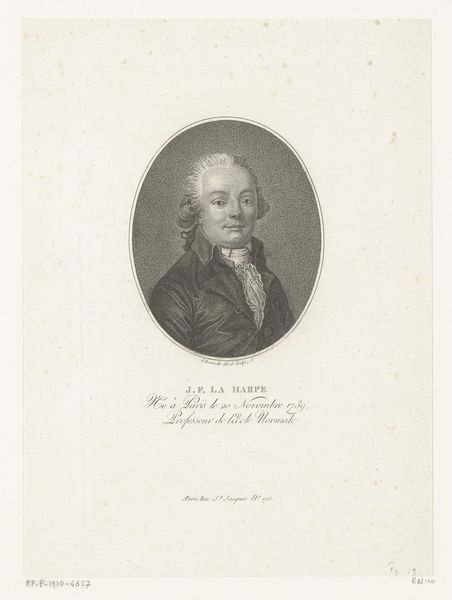
paper, engraving
#
portrait
#
pencil drawn
#
neoclacissism
#
old engraving style
#
paper
#
engraving
Dimensions: height 198 mm, width 135 mm
Copyright: Rijks Museum: Open Domain
Editor: This is "Portret van Johann Georg Heinrich Feder" by Ernst Ludwig Riepenhausen, made sometime between 1775 and 1840. It's an engraving on paper. The oval composition feels very formal and distant, befitting the man’s serious gaze and official garments. What can you tell us about the context in which this was made? Curator: This portrait speaks volumes about the culture of the late 18th and early 19th centuries. The Neoclassical style was in full swing, influencing not just art but also fashion, politics, and even moral values. These images weren't just about likeness; they were about constructing and projecting a certain kind of persona – in this case, learned and respectable. How does that compare with today’s image production? Editor: Well, social media thrives on much less formal portraiture! Here, the print format suggests this image was intended for wider circulation, almost like an academic headshot of its time. How would this kind of portrait function within society? Curator: Exactly. Engravings like these allowed for the reproduction and distribution of images, contributing to the construction of fame and authority, or a least projecting these. Feder's title is right on the print: a court advisor and philosophy professor at Gottingen. Images like this played a key role in solidifying academic and intellectual standing. Consider how these images might circulate through scholarly networks. Did the university commission the artwork, or the individual, for example? Editor: So, it's not just about him as an individual but his role and reputation within the broader scholarly community? Curator: Precisely. It speaks to the intertwined relationship between individual identity, professional status, and the politics of representation in the public sphere. An institution is solidifying this authority using the print. Editor: This really highlights how art can be used to shape public perception and cement social structures, beyond simply depicting an individual. Curator: Indeed. And that such dynamics, while significantly evolved, are very much still with us.
Comments
No comments
Be the first to comment and join the conversation on the ultimate creative platform.
